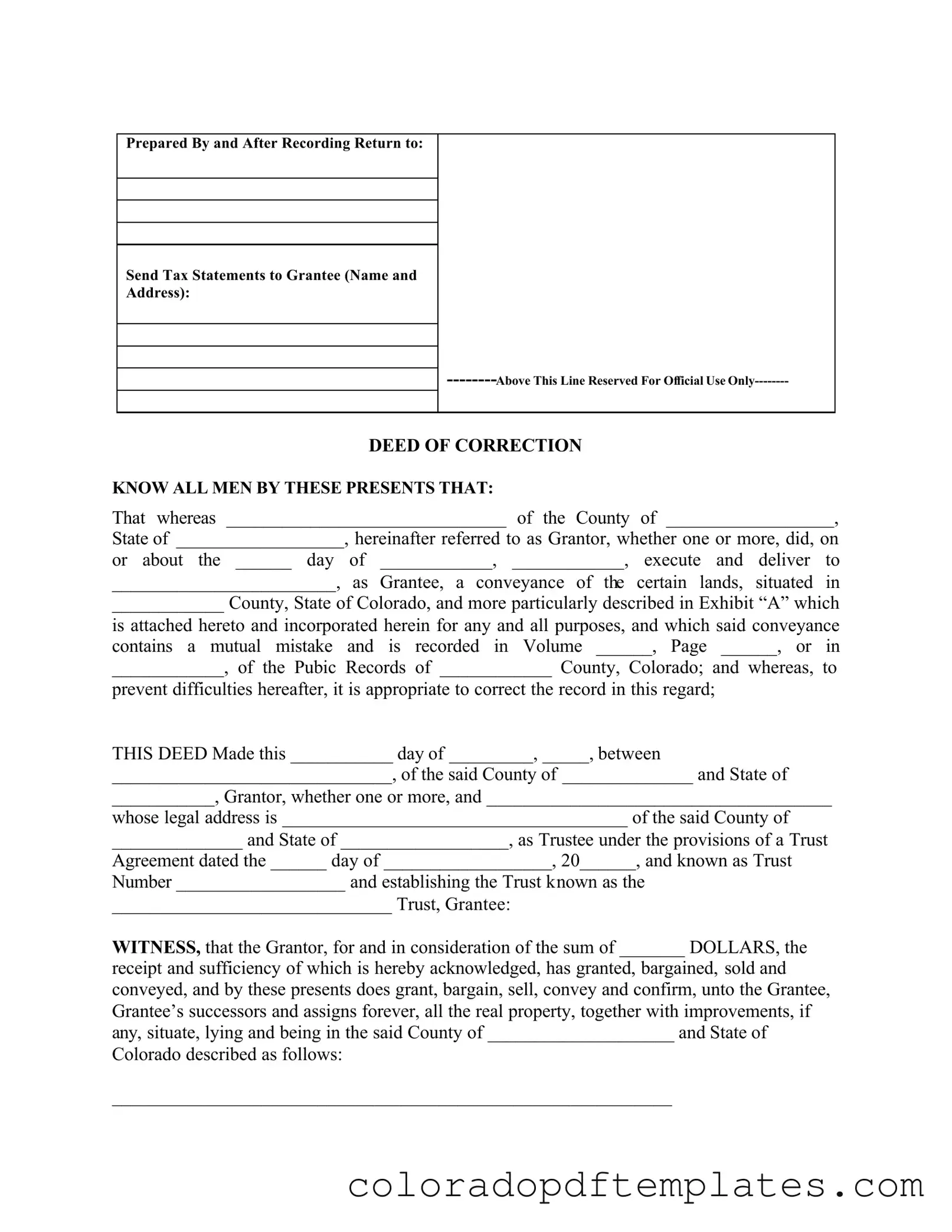The Colorado Correction form serves to correct errors in previously recorded deeds. When a deed contains a mistake, such as incorrect names, property descriptions, or other critical details, this form allows the parties involved to amend the record. The goal is to ensure that the public records accurately reflect the true intent of the parties and to prevent potential disputes in the future.
Typically, the Grantor, who is the person or entity that originally executed the deed, must complete the Colorado Correction form. If there are multiple Grantors, all must sign the form to validate the correction. It is also advisable for the Grantee, who is the recipient of the property, to be involved in the process to ensure mutual agreement on the correction.
The Colorado Correction form requires several key pieces of information, including:
-
The names and addresses of the Grantor(s) and Grantee(s).
-
The date of the original deed and the volume and page number where it is recorded.
-
A detailed description of the property being corrected.
-
The specific nature of the error that needs to be corrected.
-
The date the correction is being made.
Providing accurate and complete information is crucial to ensure the correction is legally valid and enforceable.
Once the Colorado Correction form is completed and signed by all necessary parties, it must be submitted to the appropriate county clerk and recorder's office where the original deed was filed. This can typically be done in person or by mail. It is important to check with the local office for any specific submission requirements or fees that may apply.
After submission, the county clerk will review the Colorado Correction form to ensure that it meets all legal requirements. If everything is in order, the correction will be recorded in the public records. The Grantor and Grantee should receive a copy of the recorded correction for their records. It is advisable to keep this documentation in a safe place, as it serves as proof of the correction made to the original deed.
